-
Frequently Asked Questions (FAQs) About Oil Mist Collectors
In industrial environments where oil and chemicals are utilized that could produce vapours and fumes, oil mist collectors are typically used. However, not everyone is familiar with the uses and advantages of an oil mist collector. This is the reason we created this blog, which will dispel any misconceptions you may have about such mist collectors.
How does an oil mist collector operate and what is it used for?
In industrial settings, an oil mist collector is a tool used to collect and eliminate airborne oil mist, aerosols, and vapours produced during machining and related activities. Filtration or centrifugal force are commonly used to remove oil mist particles from the air and deliver clean air back to the environment.
Why are oil mist collectors crucial in industrial settings?
Oil mist collectors are necessary to keep a workplace safe and hygienic. They aid in lowering workers’ exposure to dangerous oil mist, which can otherwise have negative health effects. These collectors also stop oil mist from condensing on equipment, which lowers maintenance expenses. Oil mist collectors also help to safeguard the environment by lowering air pollution. They stop the flow of oil mist into the atmosphere, which can otherwise contaminate the surroundings.
What are some frequent applications of oil mist collectors?
In many different industries, including metalworking, machining, automotive production, and others, where procedures produce oil mist, oil mist collectors are employed. They are essential components of machinery such as CNC machining centres and grinding machines.
Can oil mist collectors be integrated into machinery and ventilation systems that are already in use?
Indeed, a lot of oil mist collectors can be incorporated into already-existing equipment or ventilation systems. To accommodate varied settings, they come in a range of sizes and combinations.
Can oil mist collectors handle various types of oil-based fluids?
The majority of oil mist collectors are made to work with a variety of oil-based coolants and fluids that are utilized in industrial processes. To ensure compatibility, it is crucial to review the manufacturer’s specifications.
Can the oil that these devices capture be utilized again?
Yes, it is frequently possible to recover and reuse the collected oil in the manufacturing process. This saves money on materials while also reducing waste.
Do oil mist collectors need a lot of upkeep?
The majority of the time, oil mist collectors require little maintenance. The main maintenance job is routine filter cleaning or replacement. Certain gadgets however also need their internal parts to be inspected on a regular basis.
How frequently should the filters in an oil mist collector be cleaned or changed?
The quantity of oil mist produced, the type of filters being used, and the type of collector all affect how frequently filters need to be maintained. The manufacturer’s recommendations, which can range from weeks to months, should generally be followed when cleaning or replacing filters.
Keep in mind that the above-mentioned FAQs are on a very general basis. The manufacturer and model can have an impact on the specifics of the installation, upkeep, and use of oil mist collectors, so it’s important to refer to the product’s paperwork and, if required, seek professional help. One best oil mist collector you can install in your premises is the Mistkiller, which emerges as a potent remedy, working on the principle of centrifugal collection, to capture oil mist and bring about clean air
-
The Complex Makeup Of Welding Fumes
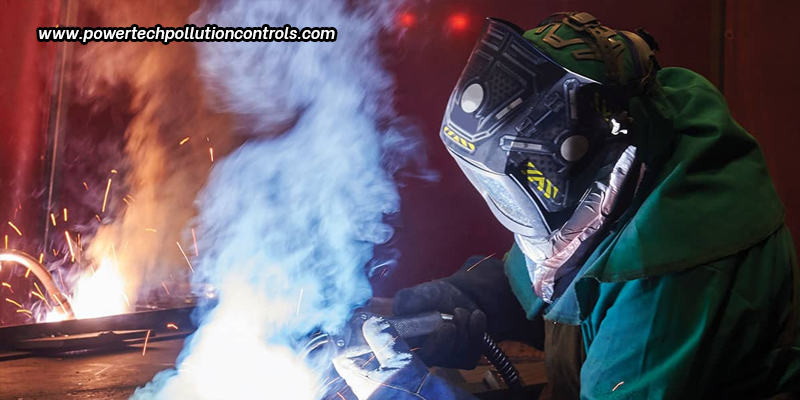
The fundamental metal fabrication method of welding is essential for building everything from complex machinery to skyscrapers. Behind the brilliant sparks and the excellent artistry, however, comes a less obvious but no less significant component of welding – welding fumes, which are a complicated mixture of small particles and gases.
The centre of the welding arc, where metals and other materials are vapourised at high temperatures, is where welding fumes are born. The crucible in which this change takes place is the welding arc, a brilliant discharge of electricity between the welding electrode and the base metal. Welding fumes are a distinctive mixture of substances created as a result of the interaction and vapourization of the elements in the welding arc, metal oxides, gases, and particulate particles being the three main components.
Metal Oxides
The two main sources of metal oxides in welding fumes are base metal and welding electrode. Metal oxides are produced in part by the base metal being welded. Iron, manganese, and chromium are just a few of the components that can be present in the metals themselves and can be oxidized during welding. Specific components may also be present in the welding electrode or filler material used during the welding process. Hence, additional metal oxides are added to the fume composition when the electrode melts and mixes with the base metal. The metal oxide content in welding fumes varies greatly and is dependent on the particular materials used. Some of the most frequently occurring components in welding fume metal oxides are hexavalent chromium, nickel, manganese, and iron.
Gases
Several chemical reactions that take place during the welding process lead to the creation of gases in welding fumes. The breakdown of the welding electrode coating and interactions with the base metal are the main components of these processes. Several gases can be found in welding fumes, but the following are some of the most prevalent ones –
- Carbon Dioxide (CO2): Carbon dioxide, which is created when carbon-containing electrode coatings burn, can affect the overall makeup of welding fumes.
- Carbon Monoxide (CO): Another combustion byproduct produced during welding is carbon monoxide, which is dangerous when ingested in high doses.
- Ozone (O3): Ozone is produced when airborne oxygen molecules come into contact with ultraviolet radiation from a welding arc.
- Nitrogen Oxides (NOx): High-temperature welding procedures can produce nitrogen oxides, well-known respiratory irritants and air pollutants.
- Hydrogen Fluoride: When welding materials containing fluorine compounds, hydrogen fluoride can be released.
Particulate Matter
Fine solid particles and liquid droplets make up the particulate matter in welding fumes. The content and size of these particles can differ. Particularly concerning is the size of the particulate debris in welding fumes. When inhaled, fine particles, often referred to as respirable particles, are small enough to reach the deepest parts of the lungs, and cause health hazards. This is why employee health and safety are of high concern because breathing in these particles can cause a variety of respiratory problems.
The Diverse Mix of Metals
The particular metals used in the welding process help to further categorize welding emissions. Depending on the kind of welding being done, these metals can have different compositions. The following are some typical welding techniques and the metals that go along with them.
- Shielded Metal Arc Welding (SMAW), which entails using an electrode that has been coated with a variety of materials, such as metal oxides and minerals.
- Gas Metal Arc Welding (GMAW), which uses a consumable wire electrode, often made of a metal alloy.
- Gas Tungsten Arc Welding (GTAW), which uses an inert tungsten electrode.
- Flux-Cored Arc Welding (FCAW), which uses a continuously fed consumable tubular electrode with a flux core.
It is essential to comprehend the chemical makeup of welding fumes because it provides insight into the potential health risks they may provide. These risks can expose welders and anyone working nearby to welding activities, which may result in a variety of acute and long-term health impacts. The long-term effects of welding fume exposure range from eye and throat irritation to the emergence of respiratory conditions and, in rare circumstances, serious neurological abnormalities. Understanding the composition of welding fumes is a crucial element in creating a safer workplace for everyone in an era where occupational health and safety are of utmost importance. And it is always preferable to stay safe, and keep your staff safe too, regardless of the metals you use or the welding process you employ. This is why it is recommended to install an effective fume extractor in your premises that can remove all dangerous toxins from the area. Getting in touch with genuine welding fume extractor manufacturers like Powertech Pollution Controls can help you get your hands on the finest fume extractor – the Fumekiller, which has emerged as a guardian of health, safety, and effectiveness in a world where fumes can have detrimental effects on the health.
-
Do You Need A Welding Fume Extractor?
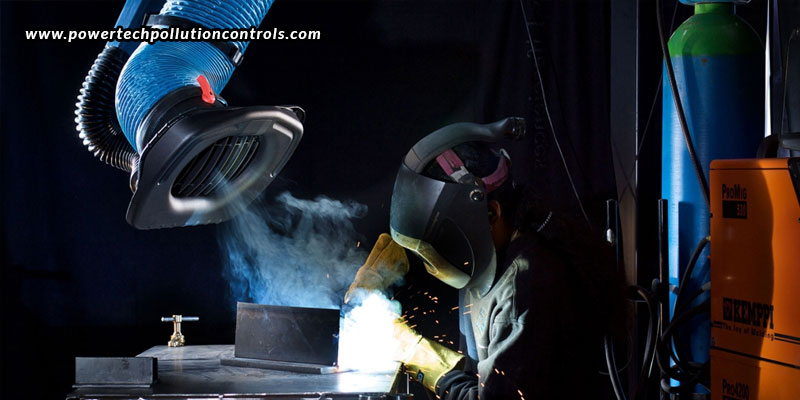
Welding fume exposure should always be regulated since it poses serious health risks to workers as well as additional security risks. Hazardous metals and gases, including nitrogen, carbon dioxide, carbon monoxide, argon, and hydrogen fluoride, are all parts of welding fumes. Numerous health issues, including ENT irritation, suffocation, nausea, dizziness, fever, stomach ulcers, kidney damage, lung damage, and cancer of the lung, larynx, or urinary tract, can arise from continuous and extensive exposure to such toxic components.
Installing a welding fume extractor
Any employees experiencing nausea, vertigo, suffocation, or discomfort must leave the area immediately, go outside, and get medical help. Employers must also watch out for their employees’ health and take preventative measures to avoid problems before they arise. Installing a welding fume extractor in the workplace is one solution. In order to help welding facilities maintain the workers safe, such equipment is responsible for capturing dangerous fumes, gases, smoke, and other airborne contaminants and managing them. However, other than welding premises, these extractors can be employed in a wide range of locations where such dangerous emissions occur, such as grinding, deburring, laser cutting, plasma cutting, and soldering.
Additional elements to verify and manage
In addition to installing a fume extractor, there are numerous other factors that must be taken into consideration as they may affect the exposure to hazardous fumes. The effects of welding fume exposure can be determined by the type of welding or other related activity that occurs, as well as the worker’s working methods. Additionally, the exposure’s effects are determined by the metals utilized, the air pattern, the ventilation, and indoor and outdoor activities. To ensure the safety of the employees on the premises, all of this must be checked, and every part must be enhanced.
The best fume extractor system: The Fumekiller
Powertech Pollution Controls is one of the most trusted welding fume extractor manufacturers, who created the Fumekiller electrostatic filtration system, a highly effective two-stage electrostatic precipitator that is designed for the capture and control of majority of fumes, smoke, and fine dust. The finest thing about this equipment is that by repeatedly and thoroughly washing them, filter modules can be reused throughout the equipment’s lifespan. Incorporated safety features including limit switches, high voltage fault trip circuitry, and motor protection, among others, ensure safe and dependable operation. Despite having all of these advantages, this equipment has much lower prices and maintenance requirements than other traditional mechanical filters. Consequently, you can have a safer and healthier working environment with this welding fume extractor because hazardous airborne contaminants are eliminated. This incredible fume extractor is useful for a wide range of processes, including welding, heat treatment, oil quenching, wire drawing, soldering, dip tinning, annealing, wave soldering, rubber curing, die casting, induction hardening, and many more. Whatever your application, you now know where to go the next time you want to get rid of various dangerous airborne pollutants!
-
Safeguarding Worker Health And Environmental Compliance With Oil Mist Collectors
When metalworking procedures, like machining, grinding, and lubricating, produce aerosolized oil particles that can pose serious threats to both employees and the environment, oil mist collectors serve a crucial function. If inhaled, the fine oil mist particles can cause health issues, pollute the air in the workplace, and possibly have a negative impact on the environment, which makes installing an oil mist collector very necessary. This article examines the critical role that oil mist collectors play, highlighting how they improve air quality, ensure worker safety, and comply with occupational health and safety laws.
Improving air quality
Preventing airborne contamination
Oil mists can spread throughout the workplace and have a severe impact on the quality of the indoor air. As oil particles accumulate on surfaces, they leave behind an unappealing and difficult-to-clean residue. These particles are efficiently removed by oil mist collectors, resulting in cleaner equipment and work areas.
Reducing odour and fumes
Metalworking procedures can also release unpleasant odours and aromas in addition to oil particles. Oil mist collectors can get rid of such unpleasant smells, making the workplace less unpleasant and safe.
Extending equipment life
Airborne oil particles can adhere to sensitive machinery and equipment, potentially leading to premature wear and damage. By eliminating oil mists from the air, oil mist collectors lessen the likelihood that equipment will malfunction, thus increasing its lifespan.
Ensuring worker safety
Respiratory protection
Oil mist collectors are made to efficiently catch and filter airborne oil particles, keeping employees from breathing in dangerous contaminants. Respiratory problems from asthma, bronchitis, and other lung-related diseases might result from inhaling oil mist. By eliminating airborne oil particles, oil mist collectors reduce these risks and help to provide a more comfortable working environment for the employees.
Reducing occupational hazards
Cutting fluids and lubricants are frequently used in metalworking processes, which can leave behind oil mist as a byproduct. These oil mist particles can build up in the atmosphere without adequate containment, increasing the risk of slip and fall incidents that result from slick flooring. Oil mist collectors lessen the amount of oil particles in the working environment, hence reducing these risks.
Enhancing workplace comfort
For workers to feel satisfied and to be productive, the workplace needs to be clean and well-ventilated. Oil mist collectors assist in upholding a more pleasant and comfortable work environment, which may have a favourable effect on staff morale and productivity.
Facilitating compliance with health and safety regulations
Occupational health and safety standards
To protect workers from exposure to dangerous substances, government authorities and occupational health organizations enforce stringent rules on airborne pollutants in workplaces. Oil mist collectors are essential to adhering to these regulations since they make sure that workplaces are safe.
Environmental regulations
Oil mist collectors not only safeguard employees, but also help maintain environmental standards. These collectors assist industries in abiding with environmental regulations and reducing their ecological impact by avoiding the release of oil droplets into the surrounding atmosphere.
Avoiding penalties and lawsuits
Lastly, workplace health and safety violations can have serious repercussions, including fines, penalties, and even legal action from affected employees. Employing oil mist collectors indicates a dedication to upholding a secure and healthy workplace, lowering the danger of negative legal and financial outcomes.
To sum up, oil mist collectors are crucial equipment for efficiently capturing and eliminating oil particles produced during metalworking processes, safeguarding workers from respiratory problems, preventing airborne contamination, and generally promoting a cleaner and safer workplace. Installing oil mist collectors promotes workplace productivity, lessens equipment wear, and exhibits environmental responsibility, in addition to protecting worker health. Oil mist collectors will continue to be an important part of ethical industrial practices as long as industries prioritize worker safety and environmental protection.
If you haven’t yet, install an oil mist filtration system to show your workers you care for their health, while also extending the life of your equipment and improving workplace safety. You can get in touch with Powertech Pollution Controls to get access to the best oil mist collector that can help maintain a healthy environment, by minimizing pollution, with the help of high-speed centrifugal collection of liquid pollutants.
-
Welding In Railway Vehicle Manufacturing: Advancements And Applications
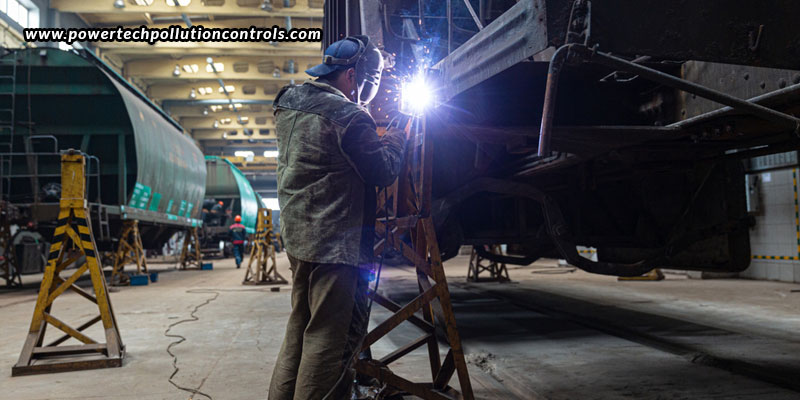
In order to build, assemble, and join the different elements that make up the complex structures of trains, locomotives, and railcars, the railroad industry extensively relies on welding techniques. Welding technology has advanced dramatically over time, resulting in gains in effectiveness, dependability, and safety. This in-depth blog will examine the value of welding in the production of railway vehicles, the many welding techniques used, and the innovations that have revolutionized this crucial facet of the railway industry.
The importance of welding in the production of railway vehicles
Safety
The structural integrity and safety of railway vehicles depend heavily on welding. The mechanical stresses, vibrations, and dynamic loads encountered during the train operation are tolerated by components that have been properly welded. High-quality welds contribute to the general safety of passengers, crew, and cargo by preventing fractures and breakdowns.
Weight reduction and improved usage of materials
Thanks to welding, railway vehicles can be built out of lightweight materials like aluminium and high-strength steel alloys. These materials provide improved mechanical qualities while lowering the vehicles’ overall weight. Utilizing lighter materials enhances fuel economy, reduces the wearing out of the tracks, and decreases operational costs.
Cost-effectiveness
With fewer parts and more complicated structures and components, welding speeds up assembly and lowers labour costs. Additionally, welding makes repair and maintenance easier, extending the useful life of railway equipment.
Customization and flexibility
Welding enables customization and design flexibility. Vehicles can be adapted and modified to fit particular needs, for as by adding extra compartments or specialized equipment for particular tasks.
The different welding methods
Gas welding
Gas welding was extensively used in the past to weld railway vehicle components. The procedure is still periodically used in specific maintenance and restoration operations for old railway vehicles, despite having been mostly replaced by more modern techniques, like those mentioned below.
Arc welding
One of the most popular techniques for creating railway vehicles is arc welding, wherein the base metal and the filler material are melted using a consumable electrode to produce an electric arc. There are a number of subtypes of arc welding too, which include shielded metal arc welding, gas metal arc welding, and flux-cored arc welding.
Laser welding
A high-energy laser beam is used in the precise and effective process of laser welding to melt and fuse metal components. It is particularly effective at welding thin materials and producing high-quality welds with little distortion. Lightweight components for contemporary railway vehicles are specially made using laser welding.
Resistance welding
Resistance welding is the process of running an electric current through metal parts to create localized heat that joins the pieces together. Spot welding and seam welding are frequently employed in the construction of railway vehicles to link sheet metal components.
Advancements in welding technology
Automated welding systems
Automation and robotics advancements have completely changed how welding is done in the production of railway vehicles. Greater accuracy, consistency, and repeatability provided by automated welding systems minimize human error and guarantee high-quality and high-speed welds. These technologies boost output rates, making them perfect for industrial manufacturing.
High-energy welding processes
Manufacturing of railway vehicles now frequently uses high-energy welding techniques including electron beam welding and laser welding. These techniques provide stronger, more precise welds because they offer greater penetration and smaller heat-affected zones.
Hybrid welding
Hybrid welding combines two or more welding techniques to take advantage of each one’s capabilities. For instance, laser-arc hybrid welding combines arc welding’s deep penetration with the speed and accuracy of laser welding. Such hybrid welding methods improve the versatility and performance of the process.
Welding has and will continue to play a crucial role in the construction and upkeep of the world’s railways, no matter what the material used, and what kind of welding process executed. And, as welding is only going to develop more over time, it is understandable that the harmful gases and fumes that generate with welding are also set to increase. This makes it crucial more than ever before to take steps towards eliminating the harm, and maintain a safe and healthy working environment for the welders, as well as every staff member within the premises. Installing a welding fume extractor India in every welding workplace is one such step. You can get in touch with Powertech Pollution Controls to get the finest fume extractor that can capture fumes, smoke, and microscopic dust from all lines of welding and soldering, thus promoting a safe and healthy working environment for one and all.
-
Ensuring A Safe And Healthy Work Environment With Welding Fume Extraction
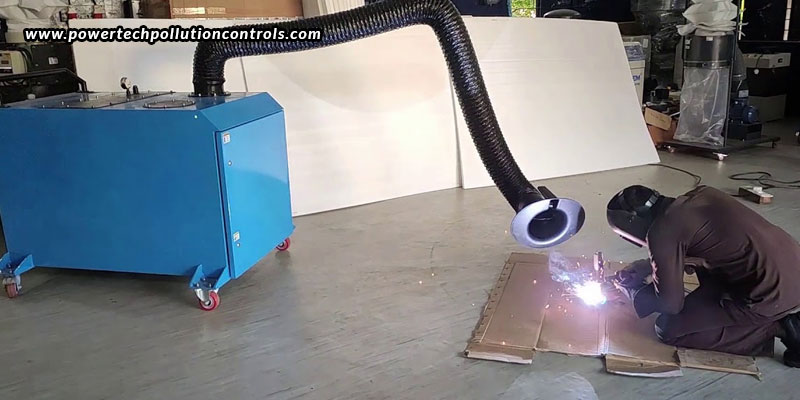
Welding is a procedure that is frequently utilized in the industrial, construction, and automotive industries, but it also has the potential to cause health problems because of the harmful welding gases being produced. Inhaling these vapours may cause a lot of health problems, which is why the correct extraction of these fumes is crucial for worker safety and the preservation of a secure workplace. In this blog post, we’ll look at the dangers of welding fumes, the value of welding fume extraction, and the several systems and methods that can be used for efficient fume extraction.
Understanding the risks associated with welding fumes
Volatile organic compounds (VOCs), metal oxides, ozone, nitrogen oxides, and other dangerous substances are all present in welding fumes. These gases can have both immediate and long-term negative health impacts when inhaled. Short-term impacts may include dizziness, nausea, and eye and throat irritation, while long-term exposure can cause more serious problems like lung cancer, respiratory ailments, and nervous system damage.
Importance of welding fume extraction
The extraction of welding gases is essential for reducing worker exposure to the above-mentioned hazardous gases. Here are a few main justifications on why it matters.
- Wellness: Implementing fume extraction is mostly done to protect the workers’ health. By removing welding fumes and preventing their spread into the surrounding air, efficient extraction systems help lower the danger of inhalation.
- Enhanced productivity: A healthier and more comfortable working environment is made possible by improved air quality brought on by efficient fume extraction. This may increase worker productivity and lower absenteeism due to respiratory-related illnesses.
- Equipment longevity: Welding gases can harm machinery and equipment over time in addition to endangering human health. Systems for extracting fumes reduce the buildup of dangerous particles on delicate parts, extending the life of welding equipment and lowering maintenance costs.
Methods of fume extraction
Effective welding fume extraction is possible using a variety of techniques and systems. These consist of –
- Local Exhaust Ventilation (LEV): This technique entails catching welding fumes at the source and sending them to a filter system or exhaust, typically through a hood or nozzle. LEV systems are very successful at regulating fume dispersion, and can be tailored to fit certain welding operations.
- Portable extraction units: These small, adaptable devices are appropriate for mobile applications or for smaller welding operations. They typically consist of an extraction arm that extracts fumes from the work area while being attached to a filtration unit.
- Downdraft tables: Downdraft tables are created for uses where fumes are produced near the work surface. The extraction mechanisms incorporated into these tables draw fumes downward, keeping them from escaping into the surrounding air.
- Fume extraction guns and torches: Some welding techniques, like MIG and TIG welding, make use of specialized guns or torches with built-in fume extraction systems. These gadgets effectively extract gases while minimizing exposure by immediately capturing them at the point of welding.
A vital component of establishing a safe and healthy working environment for welders and others nearby is welding fume extraction. Employers may safeguard their employees from hazardous exposure, adhere to regulations, boost productivity, and extend equipment lifespan by being aware of the risks posed by welding fumes and employing appropriate extraction techniques. Investing in effective fume extraction is an investment in the productivity of the employees and the long-term prosperity of the company. One such welding fume extractor India is Powertech Pollution Controls’ Fumekiller, which combines a high-efficiency two-stage electrostatic precipitator with electrostatic filtration technology to capture and control fumes, mist, smoke, and fine dust produced by welding, soldering, and other similar processes.
-
How Is Oil Mist Formed?
Let’s first define oil mist in more detail before going into the specifics of how it is formed.
Oil mist is made up of tiny oil droplets suspended in the air, whose makeup may vary based on the kind of oil or lubricant used and the particular industrial activity involved. Oil mist typically comprises of the base oil as well as any additives or impurities that may be present in the oil. The machining or cutting operation may also produce aerosolized metal or other material particles, which are present in the mist. The oil droplets can be anything between a few and several microns in diameter, which makes them small enough to remain suspended in the air for a long time. No matter what the oil mist may comprise of, every oil mist particulate composition is a dangerous compilation!
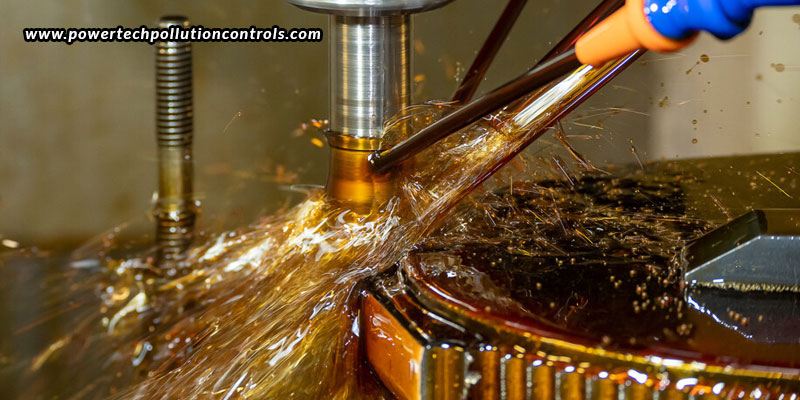
How is oil mist formed?
Oil mist can be produced through atomization or aerosolization. This happens when mechanical forces, heat, or pressure are applied to a liquid coolant or oil, causing it to break up into tiny droplets that float in the air. Here are several typical approaches, albeit the precise mechanisms of oil mist generation can vary depending on the industrial process and equipment involved.
- By means of mechanical forces: Mechanical operations including drilling, machining, cutting, and grinding can produce oil mist. The oil or coolant often comes in contact with high-speed tools or equipment during such operations. The force and movement involved in these operations may cause the oil to break up into tiny droplets, creating an oil mist.
- In pressurised systems: When oil is sprayed or injected into a chamber or enclosure, pressurised systems can also produce oil mist. High pressure causes the oil to be released in the form of a fine spray or mist of oil droplets. This technique is frequently applied in fluid power or lubrication systems.
- Due to heat and friction: In certain applications, heat and friction can cause oil mist to develop. For instance, during hot rolling or forging operations, the high temperatures and high levels of friction between the metal surfaces can cause lubricating fluids or coolants to evaporate or aerosolize, thus producing oil mist.
- Using mist generators: Some industrial operations use specialized atomizers or mist generators to purposefully produce oil mist for particular applications. These machines produce a controlled and reliable mist of oil particles using mechanisms like high-pressure nozzles, ultrasonic vibrations, or centrifugal forces.
The viscosity, content, and other characteristics of the oil or coolant being used, as well as the particular operational circumstances and equipment involved, can all have an impact on how oil mist forms. The creation and dispersion of oil mist can be minimized through proper technical controls, such as the use of mist collectors or ventilation systems, which lowers the dangers to worker health and safety. For instance, you can get in touch with Powertech Pollution Controls to get access to the best oil mist collector. With the use of high-speed centrifugal collection of liquid pollutants, this particular piece of equipment, which is marketed under the brand name Mistkiller, can be used to preserve a healthy environment by minimizing airborne pollution. A high-efficiency centrifugal collector, this mist collector is designed to capture and control most types of mist generated by the use of water-based coolants or water-based liquids.
-
Lead Contamination – Sources And Remedies
When lead, a toxic heavy metal, is present in the environment at concentrations that could be detrimental to people, animals, and ecosystems, it results in a severe environmental and health concern. There are many ways that lead can enter the environment, including industrial processes, lead-based paints, contaminated soil, and old water pipes. Here are some crucial details regarding lead contamination.
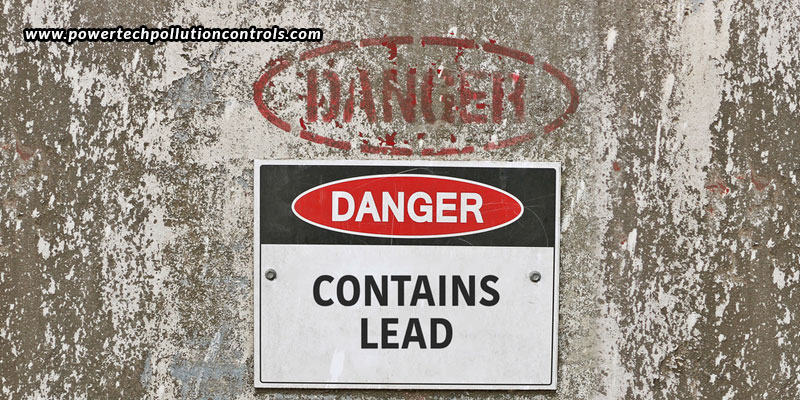
Health risks from lead contamination
Lead exposure can have a negative impact on a person’s health, especially in young children and pregnant women. Even at low concentrations, lead exposure can harm internal systems including the kidneys, liver, and nervous system and result in developmental delays, learning difficulties, impaired cognitive function, behavioural issues, and more. Exposure to lead in adults can result in neurological abnormalities, high blood pressure, and problems during pregnancy.
Sources of lead contamination
- Lead-based paint – The Indian government passed regulations in 2016 that set a 90 parts per million limit for lead levels in paints. However, there are still issues with adoption, particularly in small and medium-sized businesses. Additionally, lead-based paint in older structures may crack or degrade over time, generating lead flakes and dust.
- Industrial activities – A number of businesses, including mining, smelting, battery production, and lead-acid battery recycling, have the potential to leak lead particles and contaminate the soil, air, and water around them.
- Soil contamination – Lead contamination in the soil, particularly in metropolitan areas or close to industrial locations, can be caused by lead-based paint, industrial pollutants, or previous use of lead petrol.
- Water pipes – When the water has corrosive qualities, old plumbing systems with lead pipes or fixtures can contaminate drinking water.
Prevention and remedies for lead contamination
- Following the regulations – To address lead contamination, many nations have put legislation in place. These rules could include limitations on the use of lead in consumer goods, recommendations for safely removing lead paint, and specifications for lead levels in drinking water. It’s crucial to get advice from regional health authorities, environmental organizations, or lead remediation specialists to comprehend and follow any applicable rules and laws in your city or state.
- Personal Protective Equipment – You must make sure that any employees who might come into contact with lead are wearing proper personal protective equipment, such as gloves, coveralls, respirators, and safety glasses. The level of exposure and particular requirements should be taken into consideration while choosing any such equipment.
- Wet cleaning methods – It is essential to use moist cleaning techniques like wet mopping, wet cloth cleaning, and vacuuming in order to collect and remove lead dust.
- Regular cleaning and maintenance – Routine cleaning and maintenance procedures can guarantee that lead-contaminated surfaces, equipment, and ventilation systems are cleaned and maintained appropriately, thus lessening the chances of lead dust building up and spreading.
- Engineering controls – It is essential to put in place engineering controls to reduce lead dust production in the first place. This can involve dust collection systems, local exhaust ventilation systems, or lead-containing material containment enclosures.
Oil Mist Collector – For businesses that have contamination problems as a result of metal production procedures for lead goods and components, installing a mist collector may prove to be a wise decision. With the help of their hoods and duct systems, these collectors can filter and get rid of harmful lead oil mists. The Mistkiller from Powertech Pollution Controls is a high-efficiency centrifugal working oil mist collector that preserves a healthy environment by capturing and regulating most types of mist.
For more information, visit: https://www.powertechpollutioncontrols.com/
-
Oil Mist Collectors – Compliance With Safety Regulations
As governments and regulatory authorities have come to understand the need of safeguarding our planet’s natural resources and ensuring a more sustainable future, environmental rules have become even more stringent in recent years. Air quality is one of the regulations’ main areas of attention. Companies must now abide by laws governing air pollution and other environmental considerations. Employing mist collectors is a crucial component of adhering to these laws. Mist collectors are tools used in industrial settings to capture mist and other airborne particles, enhancing air quality and assisting businesses in adhering to environmental requirements.
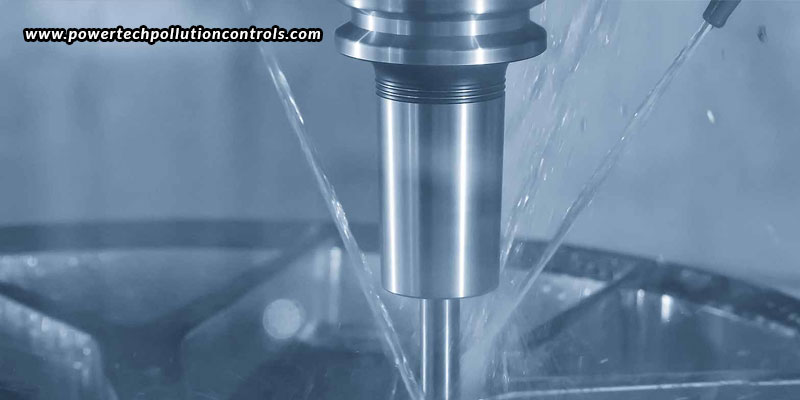
The importance of adhering to environmental regulations
The protection of the environment, the maintenance of the health and safety of your workplace environment, and a long-term sustainable future, all depend on the adherence to the set environmental regulations. These laws are intended to reduce pollution and other harmful practices that could harm the environment and people’s health. Following these rules can result in better air quality, less waste and energy use, and a healthier workplace. Companies must put environmental regulations at the top of their list of priorities in order to protect both the environment and their long-term commercial viability.
The role of mist collectors in environmental compliance
As they can drastically lower the quantity of hazardous particles and chemicals released into the atmosphere, oil mist collector systems play a crucial role in assisting businesses to comply with environmental rules relating to air pollution. These systems are designed to collect smoke, mist, and other airborne particulates produced during production operations in a range of industries, including metalworking, woodworking, and food processing. Environmental compliance is thus important in such equipment as many of the pollutants generated in such operations, such coolant mist and oil, can have detrimental effects on both human health and the environment. Oil mist can lead to respiratory troubles as well as other health problems when inhaled.
Oil mist collector systems help make sure that businesses adhere to the stringent environmental standards established by regulating authorities by catching these pollutants before they are released into the air. They also benefit enterprises economically. Industries can avoid exorbitant fines and penalties for breaking environmental regulations by minimizing the amount of pollutants they emit into the environment. By enhancing worker air quality, mist collectors can also aid in enhancing the overall effectiveness of the manufacturing processes. Environmental concerns can improve your public profile as a show of company values and draw investors looking for environmentally friendly enterprises, even while regulatory compliance is crucial.
How Powertech Pollution Controls’ mist collectors can help
Powertech Pollution Controls is a manufacturer of mist collectors that can assist businesses in adhering to air pollution-related environmental standards. Mist and other airborne particles produced by industrial processes are captured by these mist collectors, which aids in meeting regulatory standards for air quality and reducing emissions of dangerous air pollutants. Known as the Mistkiller, these mist collectors are simple to install and maintain, which can assist businesses in adhering to regulatory standards for the setup and maintenance of equipment. All in all, installing the Mistkiller oil mist collector can assist your business in adhering to all the required regulatory standards, while safeguarding your equipment, workers, and workplace.
-
Making Clean Air At The Workplace Possible And Affordable
Preventive maintenance is still frequently viewed by businesses as a waste of time and money. What they don’t realize is that reactive maintenance typically ends up costing a business extra because of unanticipated downtime. Companies lose money every time equipment needs to be maintained because workers must wait while the equipment is serviced or the maintenance is finished, and because products cannot be produced when the equipment is down. A business may benefit financially from preventive maintenance.

When it comes to workplaces where welding, grinding, milling, and similar procedures take place, where oil mist and smoke could be produced, you can save money and increase earnings by having clean air at work. One equipment that can help here is by installing an oil mist collector.
Direct savings
Your business can be saved and its profitability increased by creating a preventative maintenance routine with clean air in mind.
Reducing downtime
In facilities that prioritize production, output directly affects revenue. When production is halted or curtailed, you lose money on both employee wages and product sales. For industrial mist extractors, this can be as simple as swapping out filters during routine maintenance to reduce the possibility of needing to do so during busy production periods.
Boosting operational efficiencies
Equipment that has been properly and frequently maintained operates at its best. Less energy and resources are needed when machinery operates more effectively. This calls for maintaining clean filters and even replacing them during routine maintenance when it comes to mist extractors. Airflow is decreased as filters become clogged as they remove particulates from the air. Motors must expend more energy to maintain the constant airflow required due to this discrepancy. You may reduce your energy bills by replacing filters on a regular basis. Imagine how much more energy it costs as your extractor works harder to maintain the airflow when air filters, which can account for up to 50% of total pressure decreases.
Increasing equipment lifespan
Every piece of equipment has a lifespan; and how it functions, how it is used, and whether it is regularly maintained, all have an impact on the lifespan. By assisting in the detection and remediation of possible problems before they have a chance to become a problem, implementing a preventive maintenance programme increases the lifespan of your equipment.
Indirect savings
There are numerous indirect ways that having clean air at work can reduce costs.
Improving employee health and wellness
A worker cannot work if he is ill. Purchasing mist extraction equipment can help keep workers healthy, improve their concentration, and cut down on sick days from metal fume fever by lowering their exposure to harmful elements at work. Companies can gain long-term by minimizing employee exposure to carcinogenic substances by lowering their own risk of expensive lawsuits.
Saving on energy
We advise spending money on a mist extraction system for your operation. Heating and cooling facility air is expensive, and exhaust systems that vent outdoors are a waste of money. By effectively removing the problematic particulates from the air and then recirculating the clean air in your building, you can reduce your energy expenses.
Installing a mist collector, as you can see, can bring on both direct and indirect savings. So, if you haven’t yet, it is advisable that you invest in one. You can approach Powertech Pollution Controls to get your hands on the best oil mist collector that is designed to capture and control most types of mist generated by the use of water-based coolants and liquids.
-
Subscribe
Subscribed
Already have a WordPress.com account? Log in now.